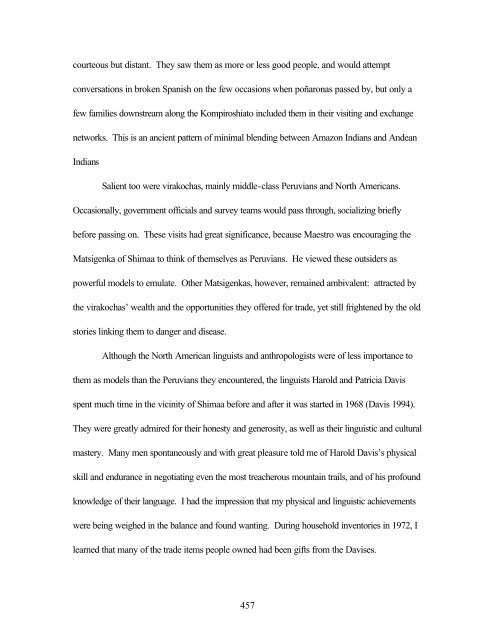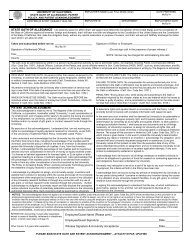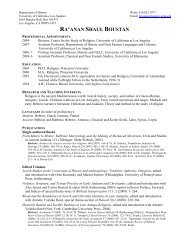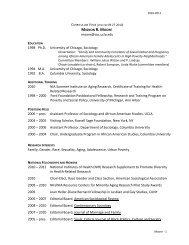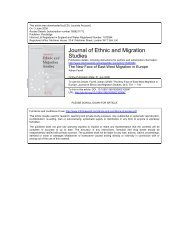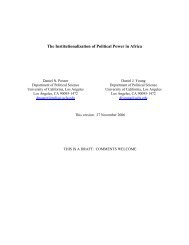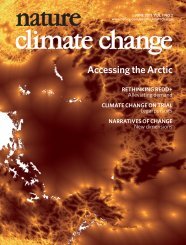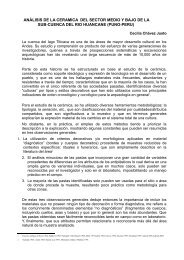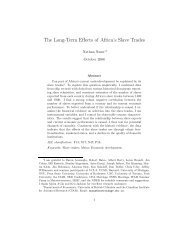433 Chapter Seven Cosmos For the Matsigenka of Shimaa, kameti ...
433 Chapter Seven Cosmos For the Matsigenka of Shimaa, kameti ...
433 Chapter Seven Cosmos For the Matsigenka of Shimaa, kameti ...
Create successful ePaper yourself
Turn your PDF publications into a flip-book with our unique Google optimized e-Paper software.
courteous but distant. They saw <strong>the</strong>m as more or less good people, and would attempt<br />
conversations in broken Spanish on <strong>the</strong> few occasions when poñaronas passed by, but only a<br />
few families downstream along <strong>the</strong> Kompiroshiato included <strong>the</strong>m in <strong>the</strong>ir visiting and exchange<br />
networks. This is an ancient pattern <strong>of</strong> minimal blending between Amazon Indians and Andean<br />
Indians<br />
Salient too were virakochas, mainly middle-class Peruvians and North Americans.<br />
Occasionally, government <strong>of</strong>ficials and survey teams would pass through, socializing briefly<br />
before passing on. These visits had great significance, because Maestro was encouraging <strong>the</strong><br />
<strong>Matsigenka</strong> <strong>of</strong> <strong>Shimaa</strong> to think <strong>of</strong> <strong>the</strong>mselves as Peruvians. He viewed <strong>the</strong>se outsiders as<br />
powerful models to emulate. O<strong>the</strong>r <strong>Matsigenka</strong>s, however, remained ambivalent: attracted by<br />
<strong>the</strong> virakochas’ wealth and <strong>the</strong> opportunities <strong>the</strong>y <strong>of</strong>fered for trade, yet still frightened by <strong>the</strong> old<br />
stories linking <strong>the</strong>m to danger and disease.<br />
Although <strong>the</strong> North American linguists and anthropologists were <strong>of</strong> less importance to<br />
<strong>the</strong>m as models than <strong>the</strong> Peruvians <strong>the</strong>y encountered, <strong>the</strong> linguists Harold and Patricia Davis<br />
spent much time in <strong>the</strong> vicinity <strong>of</strong> <strong>Shimaa</strong> before and after it was started in 1968 (Davis 1994).<br />
They were greatly admired for <strong>the</strong>ir honesty and generosity, as well as <strong>the</strong>ir linguistic and cultural<br />
mastery. Many men spontaneously and with great pleasure told me <strong>of</strong> Harold Davis’s physical<br />
skill and endurance in negotiating even <strong>the</strong> most treacherous mountain trails, and <strong>of</strong> his pr<strong>of</strong>ound<br />
knowledge <strong>of</strong> <strong>the</strong>ir language. I had <strong>the</strong> impression that my physical and linguistic achievements<br />
were being weighed in <strong>the</strong> balance and found wanting. During household inventories in 1972, I<br />
learned that many <strong>of</strong> <strong>the</strong> trade items people owned had been gifts from <strong>the</strong> Davises.<br />
457


